-
 Bitcoin
Bitcoin $82,067.5026
-0.66% -
 Ethereum
Ethereum $1,805.2382
-0.94% -
 Tether USDt
Tether USDt $1.0000
0.03% -
 XRP
XRP $2.1124
-0.98% -
 BNB
BNB $600.4357
-0.58% -
 Solana
Solana $124.2441
-0.06% -
 USDC
USDC $1.0001
0.00% -
 Dogecoin
Dogecoin $0.1660
-2.08% -
 Cardano
Cardano $0.6567
-2.33% -
 TRON
TRON $0.2322
0.69% -
 Toncoin
Toncoin $3.8860
5.49% -
 Chainlink
Chainlink $13.3319
-1.41% -
 UNUS SED LEO
UNUS SED LEO $9.1133
-5.19% -
 Stellar
Stellar $0.2655
-0.59% -
 Avalanche
Avalanche $18.7049
-4.17% -
 Sui
Sui $2.3220
1.06% -
 Shiba Inu
Shiba Inu $0.0...01241
-1.84% -
 Hedera
Hedera $0.1666
-3.06% -
 Litecoin
Litecoin $85.6734
0.39% -
 Polkadot
Polkadot $4.0181
-0.83% -
 MANTRA
MANTRA $6.2351
-0.21% -
 Bitcoin Cash
Bitcoin Cash $299.2299
-0.99% -
 Bitget Token
Bitget Token $4.5801
-1.18% -
 Dai
Dai $1.0001
0.01% -
 Ethena USDe
Ethena USDe $1.0001
0.04% -
 Pi
Pi $0.7707
-3.89% -
 Hyperliquid
Hyperliquid $12.3387
-2.74% -
 Monero
Monero $218.0211
1.16% -
 Uniswap
Uniswap $5.8505
-1.80% -
 Aptos
Aptos $5.2708
1.24%
How does DeFi mining use smart contracts to allocate rewards?
Smart contracts automate DeFi mining reward distribution, ensuring transparency and fairness by tracking contributions and calculating rewards based on predefined algorithms.
Mar 28, 2025 at 08:42 am

The Role of Smart Contracts in DeFi Mining Reward Allocation
Decentralized Finance (DeFi) mining, unlike traditional mining which relies on solving complex mathematical problems, leverages smart contracts to automate reward distribution. These self-executing contracts, written in code and residing on a blockchain, govern the entire process, ensuring transparency and eliminating the need for intermediaries. This significantly differs from centralized systems where a single entity controls reward allocation.
Smart contracts in DeFi mining handle several crucial aspects of reward distribution. First, they define the rules for earning rewards. This includes specifying the required actions, like providing liquidity to a decentralized exchange (DEX) or staking tokens in a lending protocol. The contracts then automatically track these actions, verifying participation and calculating earned rewards based on predefined algorithms.
The allocation mechanism itself is usually embedded within the smart contract's code. This could involve a simple proportional distribution based on the amount of contribution, a tiered system offering higher rewards for larger contributions, or more complex models incorporating factors like time locked assets or network activity. These algorithms are publicly auditable, promoting trust and transparency.
Understanding the Mechanisms of Reward Allocation
Smart contracts use several key mechanisms to ensure fair and efficient reward allocation in DeFi mining. One common method is the use of tokenomics. This refers to the economic model governing the token's supply, distribution, and usage. The smart contract meticulously tracks token balances, ensuring rewards are accurately calculated and distributed according to the established tokenomics.
Another crucial mechanism is the use of oracles. These external data feeds provide real-time information to the smart contract, such as the current price of an asset or the total amount of liquidity in a pool. This data is essential for calculating rewards accurately, especially in scenarios involving multiple assets or dynamic reward structures.
Furthermore, many DeFi mining platforms use time-based reward models. These models reward users based on how long they participate. Smart contracts track the duration of participation, ensuring users are rewarded proportionally to their commitment. This incentivizes long-term engagement and stability within the DeFi ecosystem.
A Step-by-Step Look at Reward Allocation
Let's consider a simplified example of a liquidity providing DeFi mining scenario:
- Step 1: Providing Liquidity: A user deposits tokens into a liquidity pool on a decentralized exchange (DEX) governed by a smart contract.
- Step 2: Transaction Monitoring: The smart contract continuously monitors the liquidity pool, tracking the user's contribution.
- Step 3: Reward Calculation: Based on the predefined algorithm (e.g., proportional to the user's share of the pool), the smart contract calculates the user's earned rewards.
- Step 4: Reward Distribution: Once a specific period elapses (e.g., daily or weekly), the smart contract automatically distributes the calculated rewards to the user's wallet.
- Step 5: Transparency and Auditability: The entire process is recorded on the blockchain, making it transparent and auditable by anyone.
This process ensures that rewards are automatically distributed fairly and efficiently, without the need for manual intervention or centralized control.
Variations in Reward Allocation Strategies
The specific methods employed for reward allocation can vary significantly across different DeFi platforms. Some might utilize a linear reward distribution, where rewards decrease linearly over time. Others might employ a tiered system offering escalating rewards based on the amount of capital contributed. Some even incorporate referral programs, rewarding users for attracting new participants.
The complexity of these reward models is directly reflected in the sophistication of the underlying smart contracts. More complex models require more intricate code, demanding rigorous auditing to ensure security and accuracy. The choice of allocation strategy heavily influences user participation and the overall success of the DeFi mining project.
The smart contract is also responsible for managing the overall supply of rewards. It determines the total amount of rewards to be distributed and the rate at which they are released. This careful management is crucial to maintaining the long-term sustainability of the DeFi project and preventing inflation.
The use of smart contracts in DeFi mining offers a significant advantage over traditional, centralized systems. It provides a transparent, secure, and automated mechanism for allocating rewards, fostering trust and participation in the decentralized ecosystem. This inherent transparency allows users to independently verify the fairness and accuracy of the reward distribution process.
Frequently Asked Questions
Q: What are the risks associated with DeFi mining using smart contracts?
A: Smart contract vulnerabilities are a major risk. Bugs in the code could lead to unforeseen reward distributions or even the loss of funds. Thorough audits are crucial to mitigate this risk. Additionally, the volatility of cryptocurrency markets can impact the value of earned rewards.
Q: How can I ensure the smart contract allocating rewards is secure?
A: Look for platforms that have undergone rigorous security audits by reputable firms. Examine the smart contract code yourself (if you have the technical expertise) or rely on community reviews and discussions to assess its security.
Q: Are all DeFi mining rewards distributed equally?
A: No, reward allocation methods vary widely. Some platforms distribute rewards proportionally to contributions, while others use tiered systems or incorporate time-based incentives. Always carefully review the specific reward mechanism of a platform before participating.
Q: What happens if a smart contract encounters an error during reward allocation?
A: The outcome depends on the specific error and the contract's design. Some contracts might halt operations until the error is fixed, while others might have fallback mechanisms in place. Transparency and clear communication from the platform are key in such situations.
Q: Can I participate in DeFi mining without understanding smart contracts?
A: While you don't need to understand the code itself, it's crucial to understand the platform's reward mechanism and associated risks. Researching the platform and its security measures is essential before participation.
Disclaimer:info@kdj.com
The information provided is not trading advice. kdj.com does not assume any responsibility for any investments made based on the information provided in this article. Cryptocurrencies are highly volatile and it is highly recommended that you invest with caution after thorough research!
If you believe that the content used on this website infringes your copyright, please contact us immediately (info@kdj.com) and we will delete it promptly.
- Inverse Head-and-Shoulders Pattern in Bitcoin (BTC) Price Charts Might Not Be as Promising as it Appears
- 2025-03-31 08:40:12
- Dawgz AI ($DAGZ) Combines Artificial Intelligence with Meme Culture to Deliver 1000x Potential
- 2025-03-31 08:40:12
- Roman coin that is believed to be the first of its kind found in the UK has sold for nearly £5,000
- 2025-03-31 08:35:13
- Cardano (ADA) Price Repeating a Pattern From 2024 That May Signal a Massive Pump
- 2025-03-31 08:35:13
- Development activity on Ethereum stands as the most active in blockchain space by tracking 165.7K developer events.
- 2025-03-31 08:30:12
- How This Crypto Trader Made a 470,000% Profit on Pepe
- 2025-03-31 08:30:12
Related knowledge
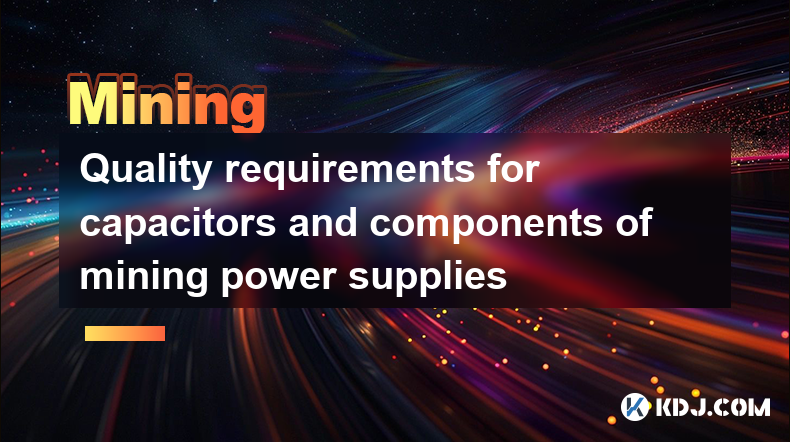
Quality requirements for capacitors and components of mining power supplies
Mar 29,2025 at 02:57pm
The Crucial Role of Power Supply Components in MiningMining cryptocurrencies, especially those using Proof-of-Work consensus mechanisms, demands significant computational power. This translates to a high power consumption, placing immense strain on the power supply units (PSUs) of mining rigs. The reliability and longevity of these PSUs are directly ti...
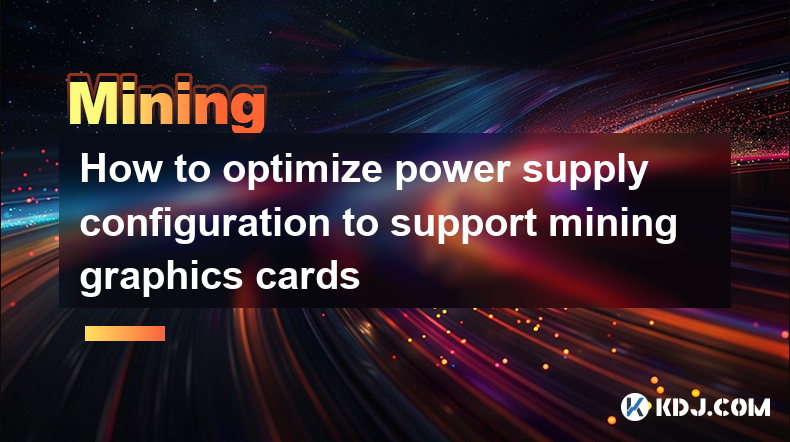
How to optimize power supply configuration to support mining graphics cards
Mar 29,2025 at 10:00pm
Understanding Power Consumption in GPU MiningMining cryptocurrencies, especially with graphics cards (GPUs), is an energy-intensive process. Understanding your power needs is crucial to avoid damaging your hardware or experiencing instability. Each GPU has a specific power draw, usually listed in its specifications. You also need to factor in the power...
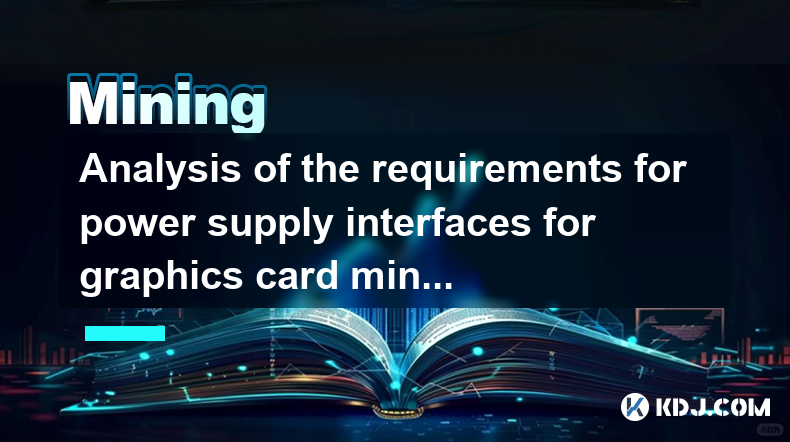
Analysis of the requirements for power supply interfaces for graphics card mining
Mar 29,2025 at 07:35pm
Understanding Power Supply Needs for GPU MiningGraphics card mining, particularly with high-end GPUs, demands substantial power. Understanding the power supply interface requirements is crucial for efficient and safe operation. Different GPUs have varying power consumption profiles and connector types. Failure to meet these requirements can lead to ins...
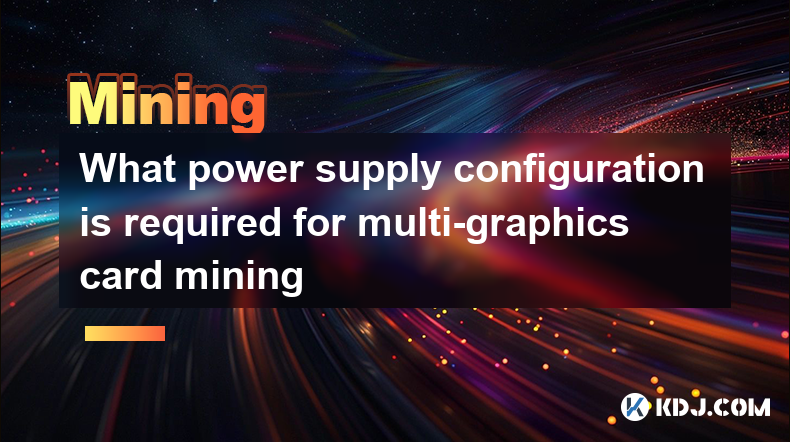
What power supply configuration is required for multi-graphics card mining
Mar 29,2025 at 11:08am
? Power Supply Needs for Multi-GPU Mining RigsMining cryptocurrency, particularly with multiple graphics cards (GPUs), demands a robust and reliable power supply. The power requirements aren't simply the sum of each GPU's TDP (Thermal Design Power). Several other components contribute significantly to the overall energy draw. Understanding these factors...
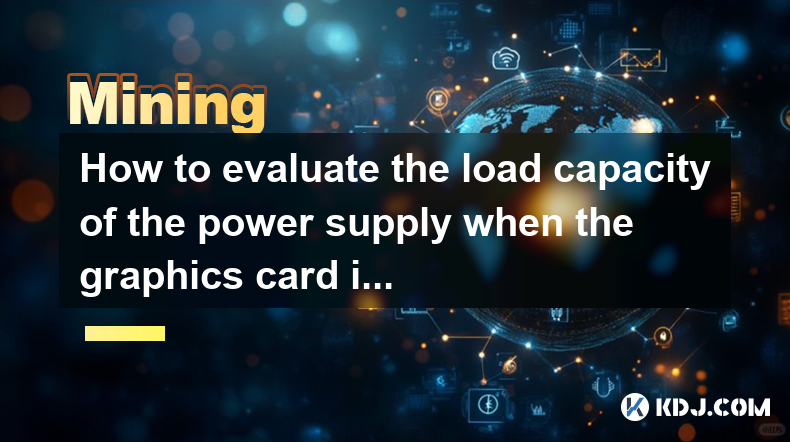
How to evaluate the load capacity of the power supply when the graphics card is mining
Mar 29,2025 at 11:14am
How to Evaluate the Power Supply Load Capacity When the Graphics Card is Mining Understanding Power Consumption in Cryptocurrency MiningCryptocurrency mining, particularly with GPUs, is a power-intensive process. Understanding your power supply's capabilities is crucial to prevent damage to your hardware and ensure stable operation. Insufficient power c...
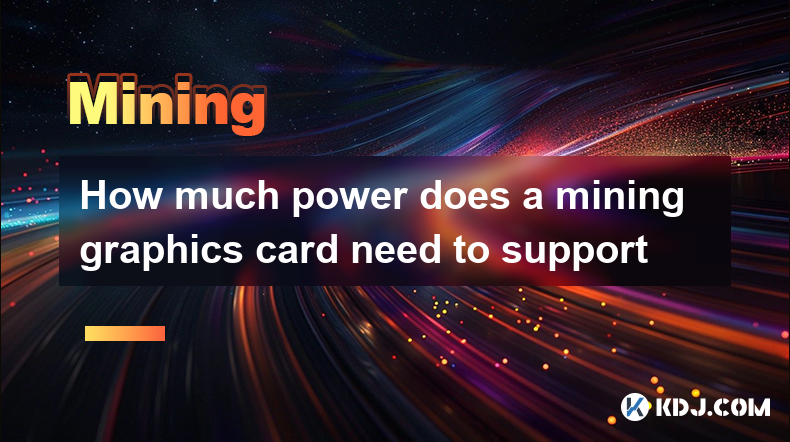
How much power does a mining graphics card need to support
Mar 29,2025 at 04:14pm
? Power Consumption in Cryptocurrency MiningThe power consumption of a graphics card (GPU) used for cryptocurrency mining is a crucial factor determining profitability and operational costs. The power draw isn't a fixed number; it varies significantly depending on several key aspects of both the card itself and the mining operation. Understanding these ...

Quality requirements for capacitors and components of mining power supplies
Mar 29,2025 at 02:57pm
The Crucial Role of Power Supply Components in MiningMining cryptocurrencies, especially those using Proof-of-Work consensus mechanisms, demands significant computational power. This translates to a high power consumption, placing immense strain on the power supply units (PSUs) of mining rigs. The reliability and longevity of these PSUs are directly ti...

How to optimize power supply configuration to support mining graphics cards
Mar 29,2025 at 10:00pm
Understanding Power Consumption in GPU MiningMining cryptocurrencies, especially with graphics cards (GPUs), is an energy-intensive process. Understanding your power needs is crucial to avoid damaging your hardware or experiencing instability. Each GPU has a specific power draw, usually listed in its specifications. You also need to factor in the power...

Analysis of the requirements for power supply interfaces for graphics card mining
Mar 29,2025 at 07:35pm
Understanding Power Supply Needs for GPU MiningGraphics card mining, particularly with high-end GPUs, demands substantial power. Understanding the power supply interface requirements is crucial for efficient and safe operation. Different GPUs have varying power consumption profiles and connector types. Failure to meet these requirements can lead to ins...

What power supply configuration is required for multi-graphics card mining
Mar 29,2025 at 11:08am
? Power Supply Needs for Multi-GPU Mining RigsMining cryptocurrency, particularly with multiple graphics cards (GPUs), demands a robust and reliable power supply. The power requirements aren't simply the sum of each GPU's TDP (Thermal Design Power). Several other components contribute significantly to the overall energy draw. Understanding these factors...

How to evaluate the load capacity of the power supply when the graphics card is mining
Mar 29,2025 at 11:14am
How to Evaluate the Power Supply Load Capacity When the Graphics Card is Mining Understanding Power Consumption in Cryptocurrency MiningCryptocurrency mining, particularly with GPUs, is a power-intensive process. Understanding your power supply's capabilities is crucial to prevent damage to your hardware and ensure stable operation. Insufficient power c...

How much power does a mining graphics card need to support
Mar 29,2025 at 04:14pm
? Power Consumption in Cryptocurrency MiningThe power consumption of a graphics card (GPU) used for cryptocurrency mining is a crucial factor determining profitability and operational costs. The power draw isn't a fixed number; it varies significantly depending on several key aspects of both the card itself and the mining operation. Understanding these ...
See all articles






















































































